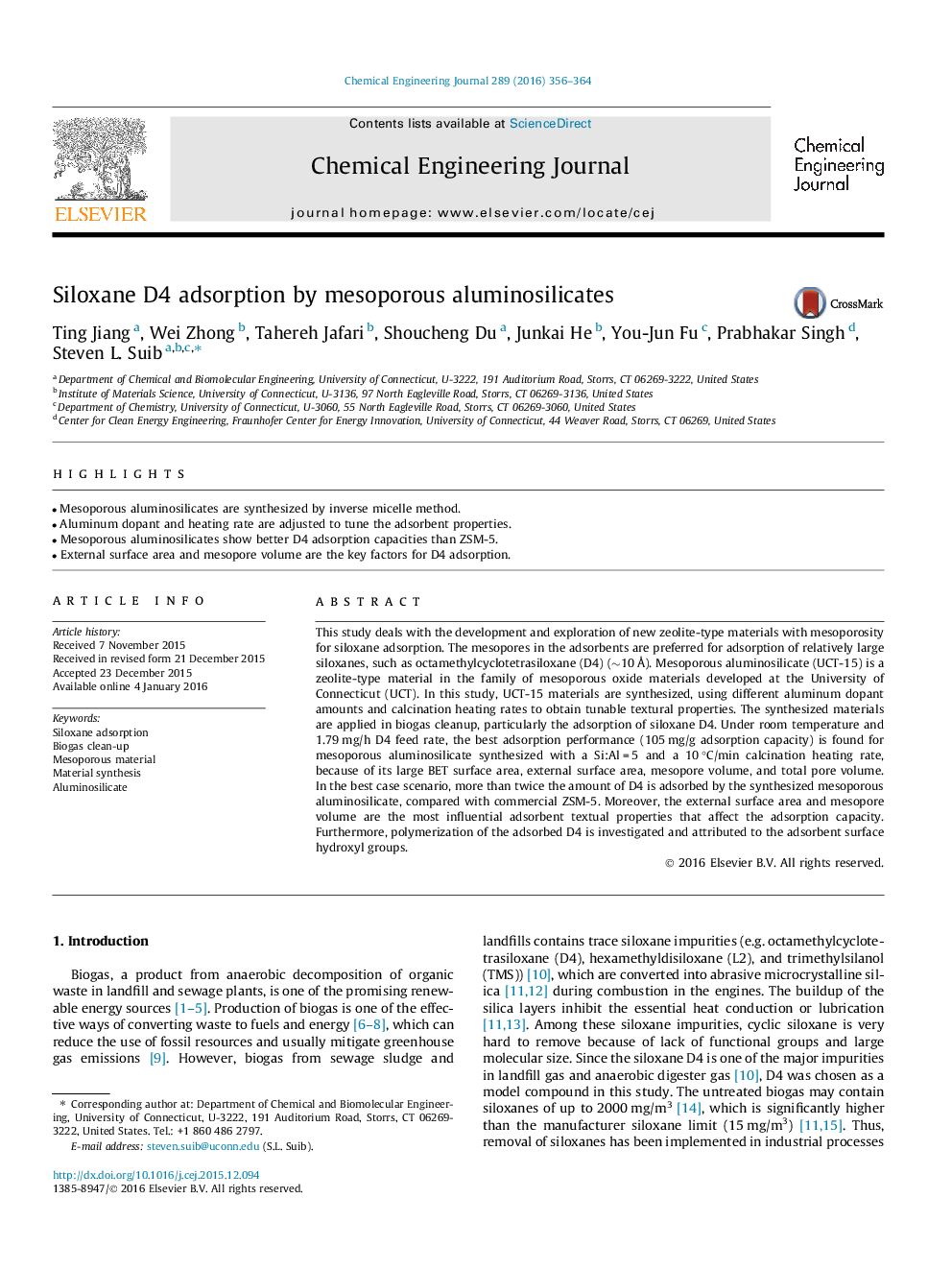| Article ID | Journal | Published Year | Pages | File Type |
|---|---|---|---|---|
| 145827 | Chemical Engineering Journal | 2016 | 9 Pages |
•Mesoporous aluminosilicates are synthesized by inverse micelle method.•Aluminum dopant and heating rate are adjusted to tune the adsorbent properties.•Mesoporous aluminosilicates show better D4 adsorption capacities than ZSM-5.•External surface area and mesopore volume are the key factors for D4 adsorption.
This study deals with the development and exploration of new zeolite-type materials with mesoporosity for siloxane adsorption. The mesopores in the adsorbents are preferred for adsorption of relatively large siloxanes, such as octamethylcyclotetrasiloxane (D4) (∼10 Å). Mesoporous aluminosilicate (UCT-15) is a zeolite-type material in the family of mesoporous oxide materials developed at the University of Connecticut (UCT). In this study, UCT-15 materials are synthesized, using different aluminum dopant amounts and calcination heating rates to obtain tunable textural properties. The synthesized materials are applied in biogas cleanup, particularly the adsorption of siloxane D4. Under room temperature and 1.79 mg/h D4 feed rate, the best adsorption performance (105 mg/g adsorption capacity) is found for mesoporous aluminosilicate synthesized with a Si:Al = 5 and a 10 °C/min calcination heating rate, because of its large BET surface area, external surface area, mesopore volume, and total pore volume. In the best case scenario, more than twice the amount of D4 is adsorbed by the synthesized mesoporous aluminosilicate, compared with commercial ZSM-5. Moreover, the external surface area and mesopore volume are the most influential adsorbent textual properties that affect the adsorption capacity. Furthermore, polymerization of the adsorbed D4 is investigated and attributed to the adsorbent surface hydroxyl groups.
